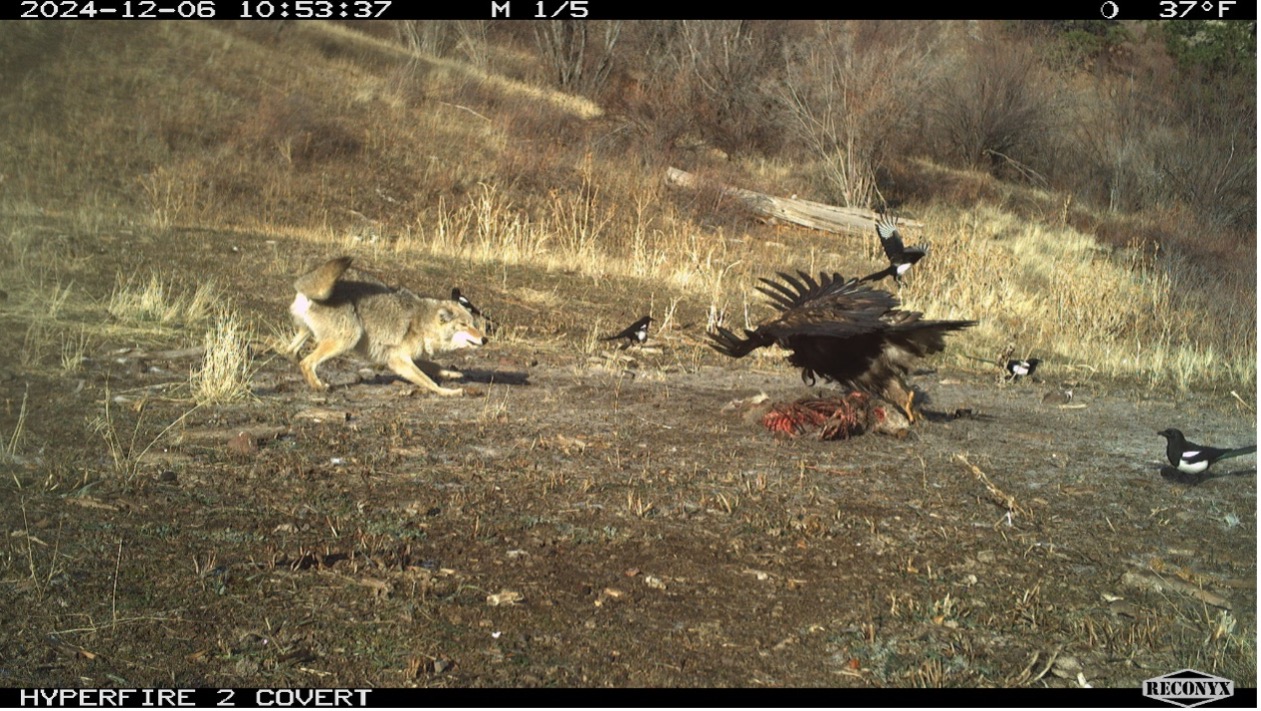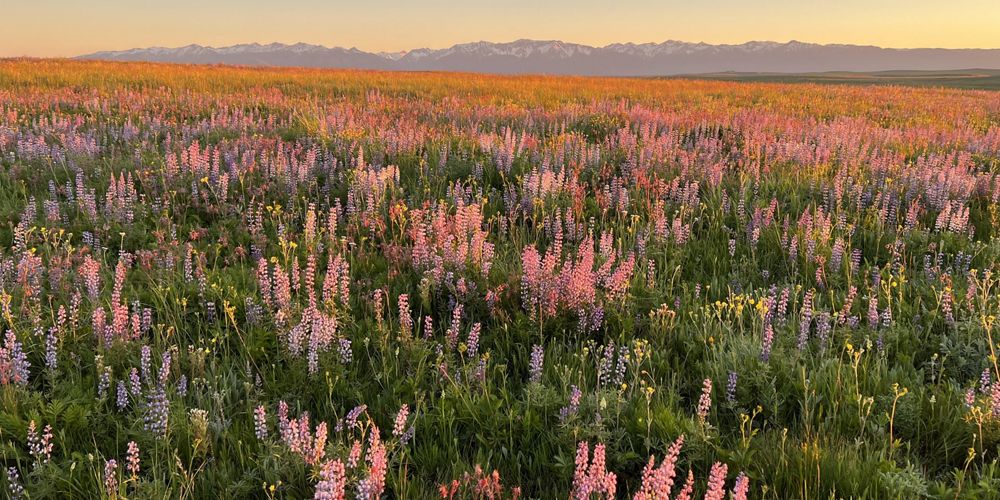Hunting on Zumwalt Prairie Preserve
What You Need to Know

Elk are an integral species on the Zumwalt Prairie Preserve and we work to ensure the health of both the herd and their habitat.
Hunting is an important management tool that not only promotes species diversity but maintains the important social and cultural platforms that hunting provides. TNC provides limited hunting opportunities designed to benefit the land and provide world-class backcountry hunting experiences to the community.

Antlerless Elk Hunts
The 2025 Zumwalt Prairie Preserve online hunt lottery application will be open from June 20-July 31, 2025. Apply Today!
Antlerless elk hunts are administered in cooperation with the Oregon Department of Fish and Wildlife (ODFW). ODFW administers all Zumwalt 258A subunit tags. The Nature Conservancy (TNC) lottery is for permission to access the Zumwalt Prairie Preserve (ZPP) once you have drawn a tag for the Zumwalt Subunit. Hunters MUST apply for permission to access TNC’s Zumwalt Prairie Preserve via the online lottery after first drawing a Zumwalt 258A1, 258A3, 258T, or 258R (antlerless only on TNC) tag from ODFW. The preserve will not be open for public access hunting for what is now the 258A2 season, the dates of 258A2 are Oct. 1-31.
The TNC lottery will remain open from June 20th - July 31. Please do not apply for the TNC lottery until you are sure you have drawn a 258A1 or A3 tag through the ODFW draw. TNC is one of many landowners within the Zumwalt 258A Subunit, please reach out to ODFW in Enterprise, OR for a list of private landowners within the unit who might give access.
Eagles, hawks and humans can all be poisoned by lead. The bodies of animals shot with lead ammunition often contain toxic, microscopic lead fragments far from the initial point of entry and a lead fragment the size of a grain of rice is enough to kill an adult bald eagle. As stewards, hunters and re-loaders we understand the cost and effort to switch ammunition, but if you are able, we would greatly appreciate it if you could hunt with non-lead here on the Zumwalt. For more information visit huntingwithnonlead.org.
Lottery Details
ODFW implemented these hunts as a management tool to lower elk herd numbers on the greater Zumwalt Prairie and minimize overgrazing by large elk herds. Over a decade of antlerless elk hunting, elk numbers have come down to manageable numbers for coexistence with cattle, wildlife and bunchgrass resources. As such, ODFW and some landowners, including TNC, have moved from a herd reduction model to a herd maintenance approach, thus lowering overall tag numbers and limiting access. TNC staff will continue to monitor elk numbers on the preserve and adjust hunter access numbers each year based on the previous year’s elk harvest count and data collected throughout the year.
For 2025, TNC will host a limited number of antlerless elk hunters:
- 258A1 – 15 Hunters- 9,500 acres of the preserve will be accessible to hunt during 258A1.
- 258A2 – 0 Hunters
- 258A3 – 30 Hunters
- 258T-tag holders please contact Mike Beachy for more details on how to apply.
- 258R (archery) – 2 hunters (may harvest antlerless elk only on TNC)
Please note, this is a non-motorized, backcountry hunt in potentially rugged terrain, which may not be suitable for all hunters. For more information, contact Mike Beachy, Zumwalt Preserve steward, at mike.beachy@tnc.org.
Lead-free Hunting
Eagles, hawks, and other wildlife can all be poisoned by lead. The remains of animals shot with lead ammunition often contain hundreds of small lead fragments along the wound channel and as far as 18 inches from the path of the bullet. Even a lead fragment the size of a grain of rice is enough to kill an adult eagle. As stewards and hunters, we understand the cost and effort to test and use new ammunition. Please help us improve our hunting program and maintain healthy wildlife populations by hunting with lead-free ammunition.

Eagle Ecology
The Zumwalt Prairie is home to resident and migratory Golden and Bald eagles. On our property alone there are several nesting pairs of adult Golden Eagles. Golden Eagles have a wingspan of six to seven feet, can live to 30 years or more, and are apex hunters. They prefer to hunt in open or semi-open areas to take prey such as chukars, but regularly switch to scavenging in the fall and winter months when migrant eagles add to the population and prey becomes scarce. Eagles usually need about a half a pound of food per day but can gorge and store up to two pounds in their crops and go without food for up to a week. Golden eagles don’t usually start mating until they are at least five years old, and pairs that usually mate for life may not be successful in raising young every year.
A recent study revealed that 47% of bald eagles and 46% of golden eagles had signs of chronic lead poisoning, with statistics taken from samples across 38 states over 8 years (Slabe et. al, 2022). Lead core bullets fragment into tiny pieces that are left in the carcass and gut piles of elk, deer and small game animals. Ingestion of these lead fragments leads to poisoning in eagles and other wildlife. Although, studies have shown that when hunters choose lead-free ammunition lead levels in eagles decrease (Bedrosian et al. 2012).
Lead-free Ammunition
Copper bullets are solid, one-piece construction, not toxic to wildlife and do not fragment like a lead bullet. A copper bullet retains 95-100% of it’s weight after impact while a conventional lead bullet loses up to 25-50% of its weight to fragmentation.
Over the past decade TNC staff have harvested dozens of elk and deer with modern monolithic copper and copper alloy bullets and find them to be both accurate and highly effective. Although copper bullets are quite lethal, they are longer than a lead bullet of the same weight and need a faster twist barrel to stabilize them.
It’s recommended to first test a copper bullet that is slightly lighter than the lead bullet weight you know groups well with your rifle caliber, a lighter copper bullet will likely require the same twist as the lead bullet thus eliminating the need to purchase a faster twist barrel. Non-fragmenting copper bullets will retain 95-100% of their weight and the lighter bullet will likely have better terminal performance because of its construction. Testing different lead-free bullets and sighting in your rifle using lead-free ammunition before hunting season is essential, as well as proper shot placement to deliver the most humane kill.
Quick tips on making the switch to lead-free:
- Clean your barrel – always start with a clean slate when switching ammunition. Use a copper remover (e.g. Bore Tech Copper Remover) cleaning agent to clean your rifle barrel after firing copper bullets.
- Reduce bullet grain weight by one size (e.g. switching from a 150 gr. lead bullet to a 130 or 140 gr. copper bullet).
- Sight in – each bullet will have a different point of impact and grouping size, find the one that works for your rifle.
- Try different brands – Your rifle will perform better with a particular brand and grain weight of copper ammunition.
- Shot placement – above all else, practice, practice, practice. Use up your lead ammunition at the range to get used to your firearm, trigger, and shooting positions to ensure you are prepared for a successful, quick, ethical kill. After practicing with lead, switch to lead-free and be sure to sight-in well before hunting season.
Hunters in Oregon who voluntarily choose to use lead-free ammunition can enter drawings for incentives (including a custom rifle build, optics, and other hunting gear) through the Non-lead Hunting Education Program. Enter by providing proof of purchase and a valid Oregon hunting license. Visit www.nonleadeducation.com to learn more and enter.
Lead Ammunition Resources
Protect Zumwalt Prairie Preserve
Your support is vital to maintaining and restoring landscapes and natural areas that are essential to Oregon’s culture and economy.



